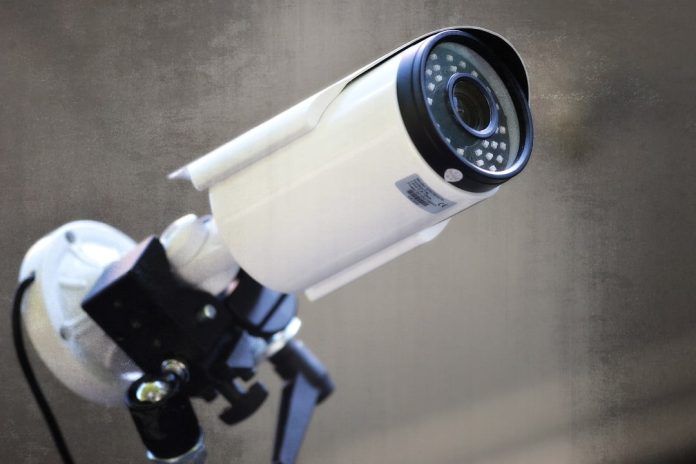SPRINT Intercom’s SPRT60XPM day/night bullet camera offers 4 format digital analogue streams giving TVI, AHD, CVI and CVBS via a 1/2.9-inch 2MP Sony CMOS sensor. There’s a 2.8-12mm motorised, autofocus zoom lens, de-fog, up-the-camera setting of on-screen display and 60m of IR. But how does it stack up against 1080p IP cameras?
SPRINT’S SPRT60XPM is a solidly made IP66-rated bullet camera with a metal body and an adjustable plastic sunshade. It’s an OEM product manufactured by Shenzhen SECTEC, an established manufacturer founded in 2001 in Shenzen China. Perhaps the most interesting feature of this camera is its ability to deliver 4-format digital analogue streams – TVI, AHD, CVI and CVBS. It’s a quality that allows the camera to be used with pretty much any digital analogue DVR, including the Dahua DHI-XVR5116HS penta-brid DVR I’m testing it with today.
The catalyst for this detailed review was a test of the Dahua DHI-XVR5116HS last month, during which I noticed the digital analogue SPRT60XPM sent over by Seadan Security Electronics was performing considerably better than the other cameras I had hooked up to the Dahua DVR – its sharpness, colour rendition, WDR capability and overall external specification cried out for a closer look.
Something else I wondered was how this digital analogue camera would stack up against IP cameras, which are often criticised for excessive latency and a tendency to blur motion at higher resolutions and slower shutter speeds. Furthermore, analogue digital cameras are making something of a comeback. Many manufacturers now carry them and they combine quite good performance qualities with low cost. Should we be seeing more of them in end user shootouts, given the deplorable performance of very low cost cameras today? Yes, I think we should. The race to the bottom in IP video really has given digital analogue a second life.
In terms of performance and specifications, the SPRT60XPM delivers 1280 x 960 resolution at 25fps and uses high profile H.264 compression, it draws 800mA from a 12V DC power supply – I’m powering it locally and not through that DVR. There are 46 LEDs in the 60m IR array, which is mounted behind a flat plexiglass plate. This cover is not shared by the lens, which has its own front element in the centre of the array that’s separated by a black rim.
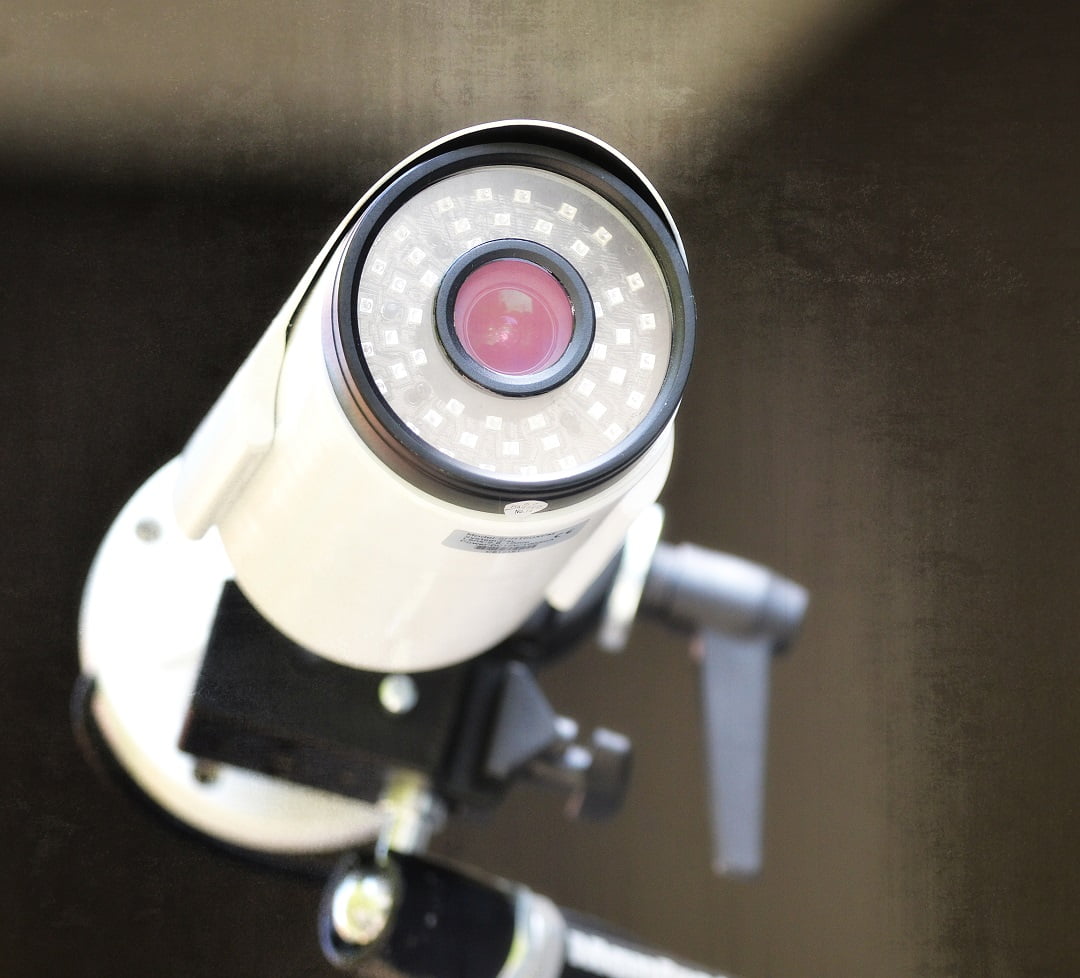
Other features include sens-up, HLC, adaptive colour enhancement, WDR, 15-zone privacy masking, 2DNR, 3DNR and smart noise reduction functions. There’s also a de-fog function. Signal to noise ratio is 50dB, auto white balance; low, middle and high WDR settings; and an operating temperature of -20 to 50C. When it comes to range, digital analogue kicks arse – transmission range over coax is up to 500m, though you do need local power supply. This sort of range make digital analogue ideal for large commercial and industrial sites.
Weight is around 1kg courtesy of that metal body and physical dimensions are 275 x 91 x 80mm. The camera body and mount feel like solid aluminium and everything is coated in thick white paint. There’s not much to confuse installers about the SPRT60XPM. There are only 2 flying leads protruding from the mounting base – BNC and 12V DC – and no ports or slots. It doesn’t get much simpler than that.
Test driving the SPRT60XPM
The first thing you notice when testing the SPRT60XPM is how easy it is to set up. I’m using the Dahua DHI-XVR5116HS 16-input DVR and setup is silly easy. It’s a fact I don’t often acknowledge but too often I spend almost as much time trying to set up an IP camera on the SEN network as I do testing it. There are different pieces of software required to crack open the latest cameras and modern VMS, powerful and wonderful thing that it is, has become more complicated through a process of necessary evolution.
My overall setup process goes like this. Power to DVR, VGA from DVR to workstation monitor, remote 12V DC power to camera, BNC to camera and BNC to DVR, double click 4-way display for full screen live view. It’s very easy. I set the camera to default with a few per cent extra brightness, the DVR records all inputs in real time and overwrites automatically. The functionality of this DVR doesn’t give me all the capability of the motorised zoom and autofocus SPRT60XPM, or I fail to find that capability (there is PTZ control) but fixed performance is solid.
Something I get a sense of during my time with the SPRT60XPM, is that the camera engine is not interfering with the image very much. Sony makes nice sensors as we all know and this 1/2.9 Sony CMOS is serving up nice performance that’s untrammelled by digital intervention. No doubt the analogue signal is digitised 4 ways inside the camera engine but it’s not over-wrought. Some digital cameras deliver representations of the real world – especially when they are under pressure from extreme lighting conditions. When you not looked at an analogue video stream for a while you lose touch with what might be called ‘analogue reality’.
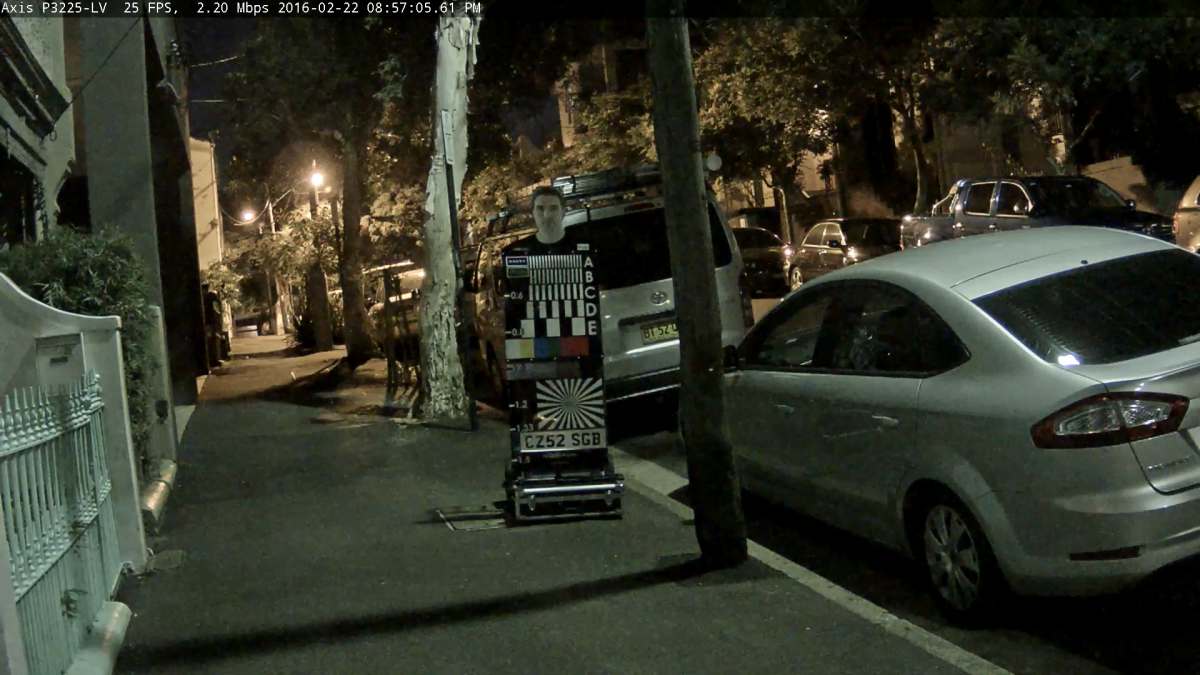
You can see the good levels of detail…and the tendency to overexposure…
Sitting down in front of the monitor I note a complete lack of noise, I see barrel distortion of about 7 per cent, colour rendition is good but it’s a little muted, there’s a tendency to over-expose which is most noticeable in our street scene at about 40m at which distance from the lens there’s also a tendency to softness. Latency is considerably less intrusive than digital but still observable – it’s 200th of a second, I think, most of it coming from the DVR processor. General WDR ability seems strong at default. Motion blur is difficult to call immediately, as snap shots are quite low res – between 200-300kb, which makes for an unfair comparison. Moving plates are possible in good light.
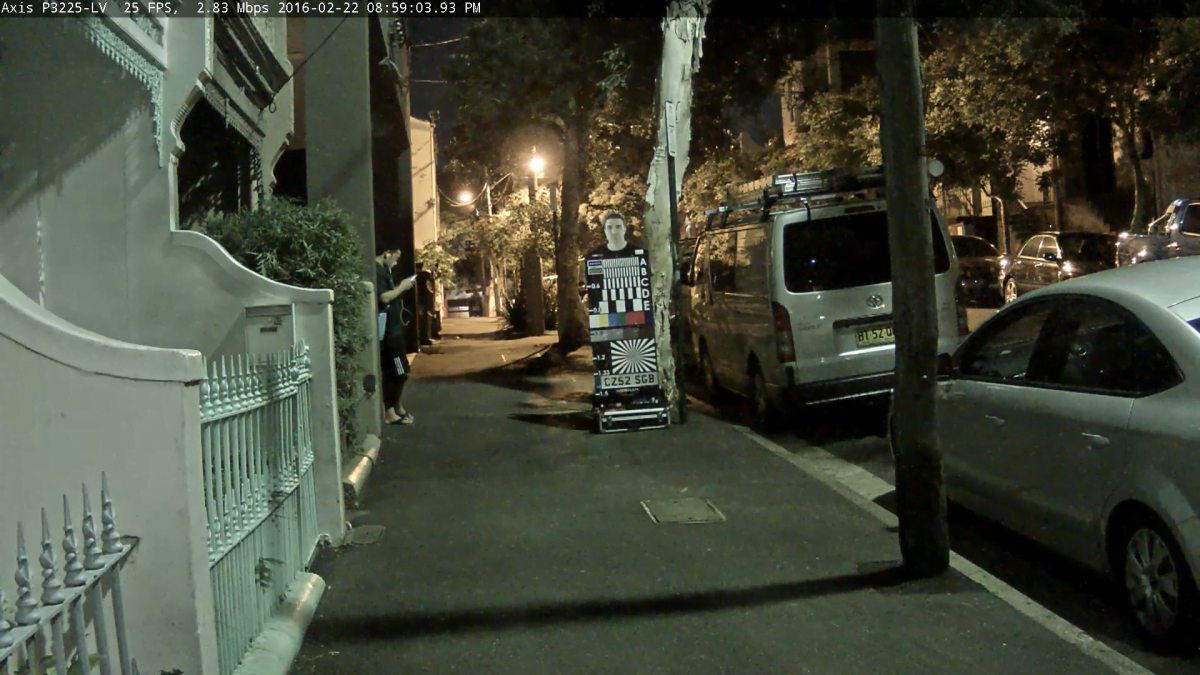
It's a gloomy day but blur levels at 40kmph are quite low…
Low light performance is good and virtually noise free. At default settings, colour is held until around 7 lux and then the camera pulls across a motorised cut filter and shifts to night mode. The live view is generally, very strong, though digital zoom at 1080p is always going to have its shortcomings and pixellation occurs after a few turns of the mouse wheel. There’s some blooming from the sensor with car headlights – enough to suggest this is a last-gen sensor.
At full screen, this camera is at least as good as any 1080p IP camera. It’s strongest from the hyperfocal distance of less than half a metre, to about 12 metres and it holds onto much of its quality towards 20 metres, giving pretty easy static plates at a slightly wide focal length of around 4.5mm. Past 20m in my application, the image falls away into softness and there’s overexposure in full sun at 40m.
The stand-out feature of this digital analogue camera viewed live is a complete lack of that odd pulsing you get flowing through digital image streams as they’re updated. Something else that’s indiscernible is general image noise. With IP cameras, there’s often underlying noise that ebbs and flows with changing light levels and is visible as shimmering around contrast points and areas of movement. With some cameras, the entire surface of an image trembles. Nothing like that is going on here. The best way to describe this camera is that performance is stable. It’s a quite consistent image across the frame in variegated lighting – the sensor is doing a very nice job of handling adjacent light changes from 8000 lux to 78,000 lux.
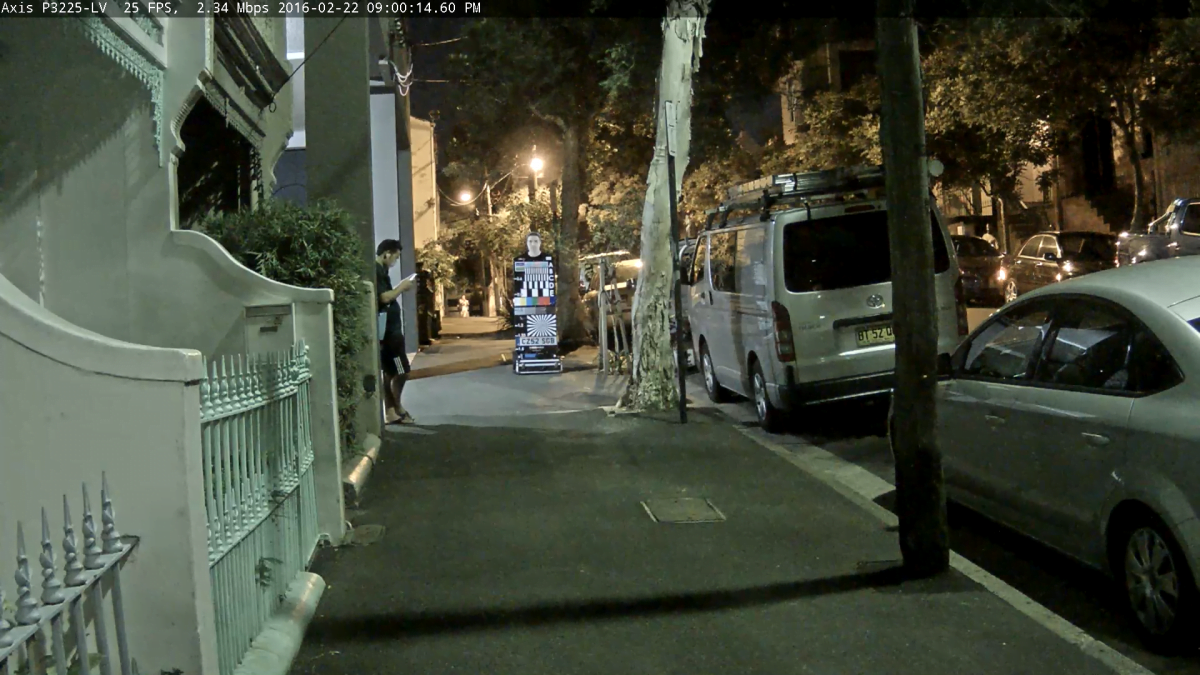
Now it's raining and I've lost faces close to the lens.
Depth of field is good, too, considering the focal length, the 1280 x 960p resolution and the over-exposure that’s going on towards Albion Lane, where the camera is looking from shade into full afternoon sun. The lens has the usual magnesium fluoride coating on the front element and is notable for a complete lack of chromatic aberrations – there’s no sign of purple fringing at all with this 2.8-12mm motorised lens – that’s a very good sign and suggests a good design with high tolerances. I am getting about 7 per cent barrel distortion at 4.5mm, which is a bit higher than usual. You’d expect distortion to be reduce considerably between 6-8mm but using the Dahua GUI I don’t have control over the motorised zoom to check this out.
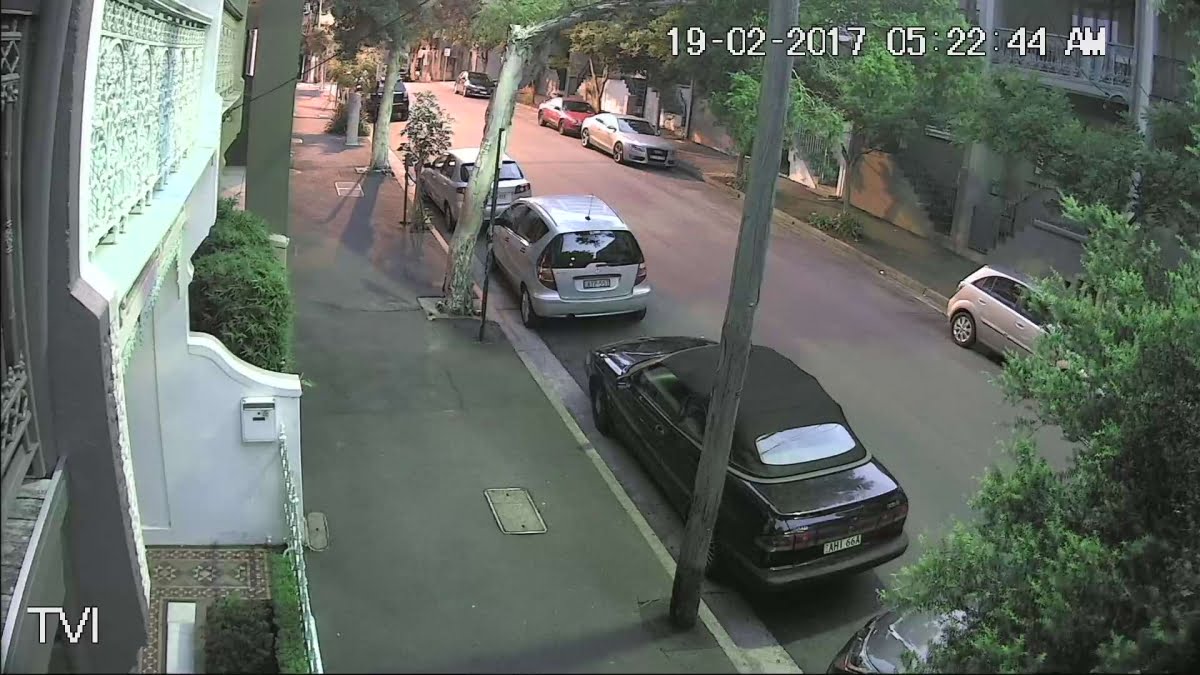
A very clean night image in colour with virtually no noise and great depth of field.
Aside from that zoom-focus issue, the Dahua DVR makes things easy. It’s a neat unit at the price – very compact and light, with a tiny footprint for a 16-input machine and a reassuring 36-month warranty. You use a CCTV system to find and view events and the XVR makes this easy. Calling up search is right click for main menu, click for search. You pick a time you want to search from and click on the timeline, click the motion search icon, select the grid squares you want to search, then click the icon again. The little DVR then goes through every event that crossed those tiles and you can save snapshots, save clips or pause the search whenever you like. It all happens so fast that even in my busy street scene I can dash through a morning’s events in a few minutes.
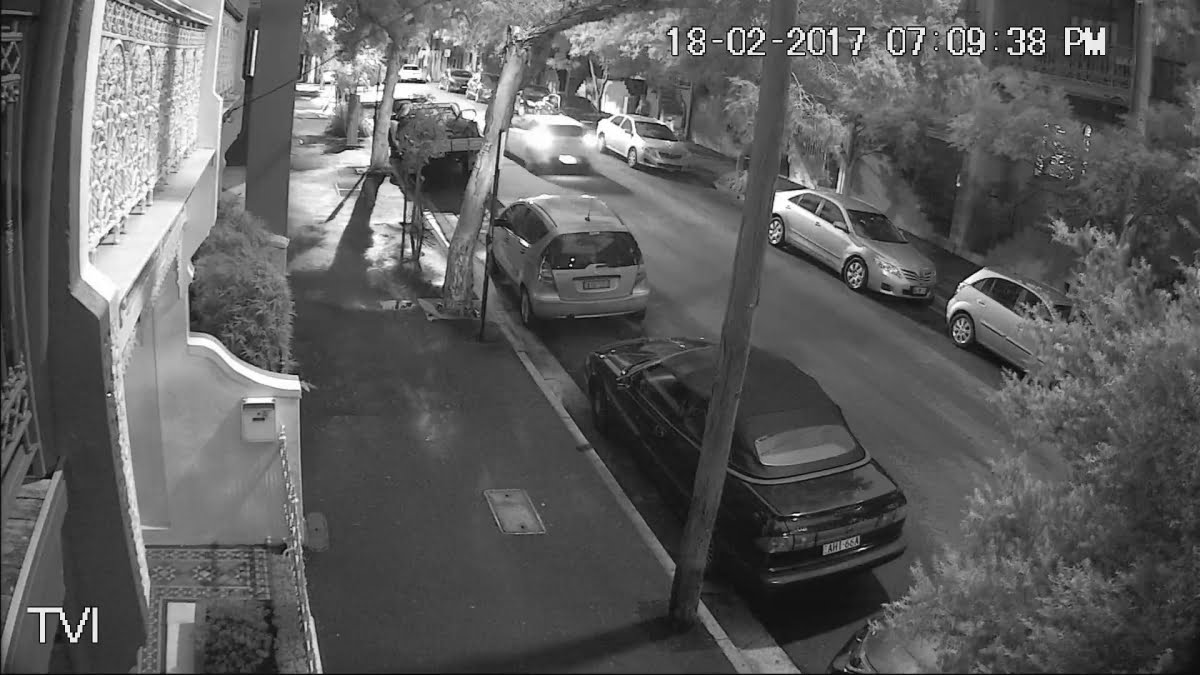
Into night mode and the detail and DoF stay high – you can see the tendency to blooming.
Should this camera be compared with the leading IP bullets of the day – cameras like the Bosch 5000 MP bullet or the Samsung SNO-8081R 5MP bullet? If your setup can handle digital analogue, then yes, they definitely could be. Performance differences are nowhere near as clear-cut as you’d think. Both the Bosch and the Samsung have more resolution and that counts a lot with digital zoom. Bosch and Samsung also have superior colour rendition. The Samsung is best with backlight. The Bosch’s digital zoom and focus is sheer operational brilliance. This SPRT60XPM is superior when it comes to lack of noise, low light performance without IR, latency and motion blur, particularly as the afternoon wears on in to evening.

And again with blooming in this image…that's the sensor spilling signal across adjacent pixels.
But the comparison that jumps out at me is the one of price. Not just when compared to bullet cameras like the Samsung and Bosch, which are high quality and have wide-ranging functionality and support that justifies higher cost. Think about low end IP bullet cameras costing less than $A200 to the trade. We’ve reached a point with low cost IP cameras where performance is impacted by miserable specifications. There are also good manufacturers competing in the basement of the IP camera market by re-badging cameras their own engineers would never dream of designing. Are capable digital analogue cameras like this SPRT60XPM better performers than low end IP cameras of the same price? Yes, they are miles better.
Fact File
Features of the SPRT60XPM camera include:
* 4-format TVI, AHD, CVI and CVBS digital analogue
* 2.8-12mm motorised, remote autofocus lens
* IP66-rated metal housing with 60m IR
* Weight around 1kg, size is 275 x 91 x 80mm
* Adaptive Colour Enhancement, WDR, HLC
* 15 privacy zones
* 1280 x 960p resolutions, H.264 compression
* Very competitive price.



